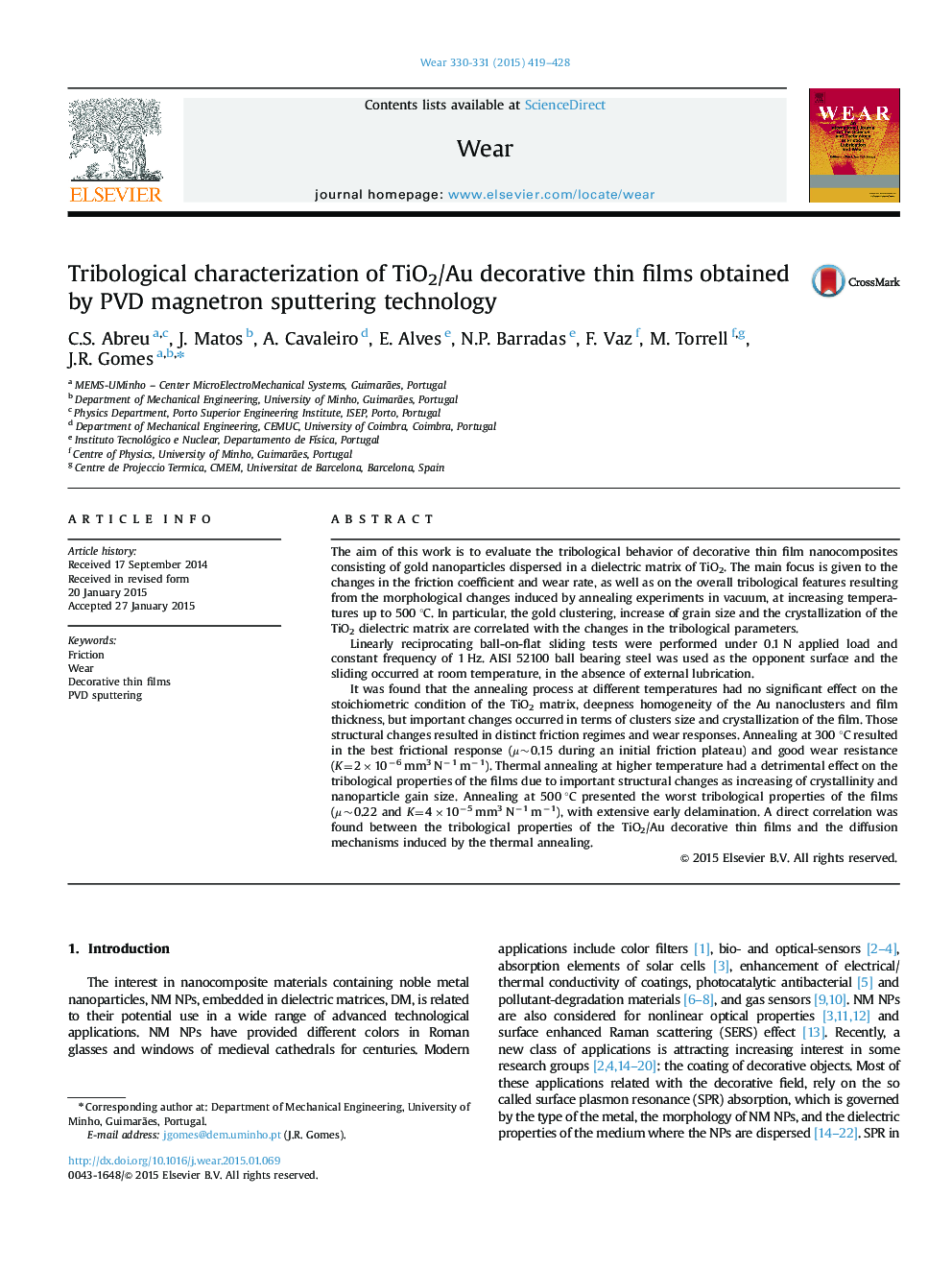| Article ID | Journal | Published Year | Pages | File Type |
|---|---|---|---|---|
| 7004322 | Wear | 2015 | 10 Pages |
Abstract
It was found that the annealing process at different temperatures had no significant effect on the stoichiometric condition of the TiO2 matrix, deepness homogeneity of the Au nanoclusters and film thickness, but important changes occurred in terms of clusters size and crystallization of the film. Those structural changes resulted in distinct friction regimes and wear responses. Annealing at 300 °C resulted in the best frictional response (µ~0.15 during an initial friction plateau) and good wear resistance (K=2Ã10â6 mm3 Nâ1 mâ1). Thermal annealing at higher temperature had a detrimental effect on the tribological properties of the films due to important structural changes as increasing of crystallinity and nanoparticle gain size. Annealing at 500 °C presented the worst tribological properties of the films (µ~0.22 and K=4Ã10â5 mm3 Nâ1 mâ1), with extensive early delamination. A direct correlation was found between the tribological properties of the TiO2/Au decorative thin films and the diffusion mechanisms induced by the thermal annealing.
Keywords
Related Topics
Physical Sciences and Engineering
Chemical Engineering
Colloid and Surface Chemistry
Authors
C.S. Abreu, J. Matos, A. Cavaleiro, E. Alves, N.P. Barradas, F. Vaz, M. Torrell, J.R. Gomes,
